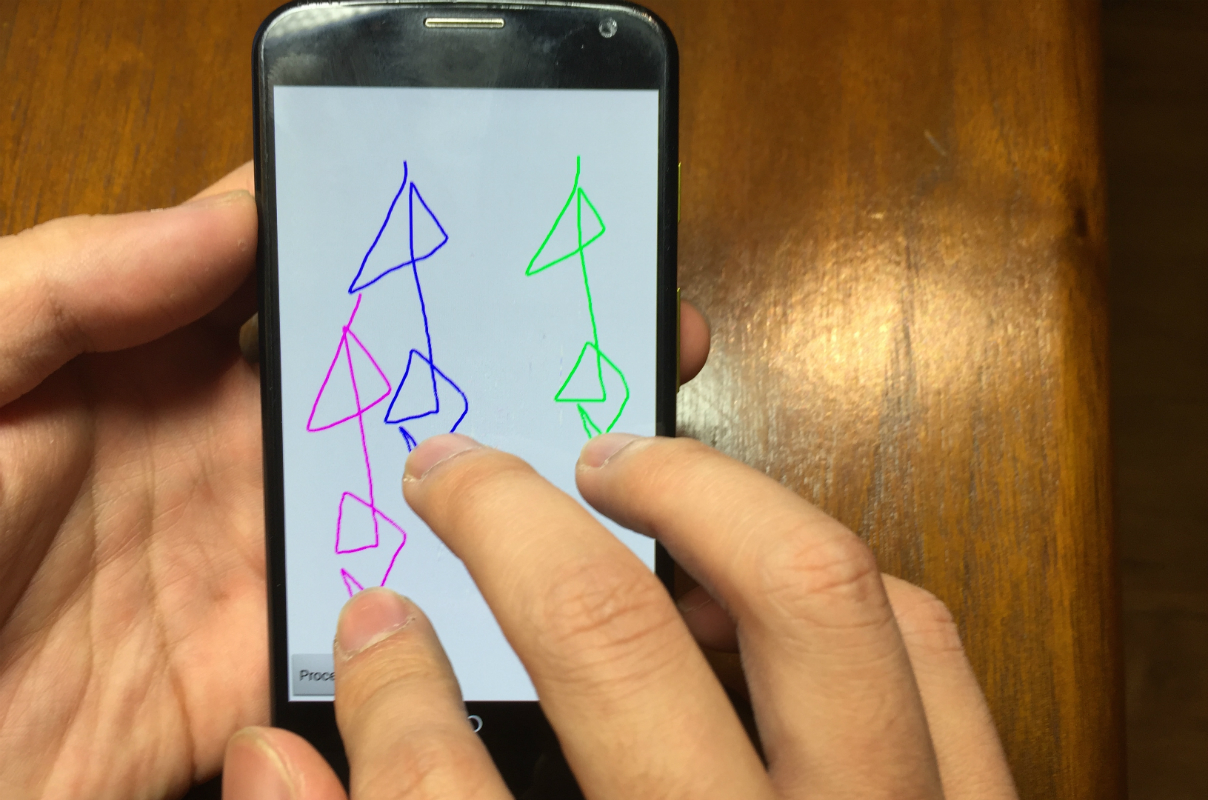Drawn to Safety: Doodles Could Secure Your Phone

Tired of wracking your brain to remember the strings of words, arrangements of letters or random numbers that you chose for your latest password? Soon, you might be able to ditch all of them and unlock your phone, apps and accounts with a doodle.
Researchers have found that doodle passwords created on touch screens using free-form gestures were easier to remember than typed-out passwords. And because unique sketches are hard to duplicate, they could keep mobile devices more secure than other types of passwords, like text entries or biometrics such as fingerprint identification.
Researchers tested software that allowed users to create passwords by drawing any type of shape on their phones' touch screens, using either one or two fingers. The doodle passwords could be letters, simple shapes, ornate squiggles — anything the user imagined — making the drawings harder for someone else to copy or guess. [Watch: Doodling Your Password Safer Than Text on Mobile?]
In previous trials, the scientists had evaluated the performance of the software that allowed mobile devices to recognize gestural passwords, and the researchers tested the doodle passwords' security and ease of use. But the new study was the first time that trials were conducted with users who created and entered doodle passwords in the context of everyday phone use.
Quick on the draw
The researchers particularly wanted to find out how sketched passwords would perform compared with text passwords when users were juggling access to multiple accounts, said study co-author Janne Lindqvist, an assistant professor with the electrical and computer engineering department in the School of Engineering at Rutgers University in New Jersey.
"If you have a lot of passwords, would you still remember them?" Lindqvist asked.
Get the world’s most fascinating discoveries delivered straight to your inbox.
The researchers installed the software on Android smartphones belonging to 91 people, and asked the individuals to create text and gestural passwords and then log in to eight virtual accounts more than 2,000 times. [Best Smartphones of 2106 from Tom's Guide, a sister site to Live Science]
Results showed that using free-form-gesture passwords significantly expedited the login process, with participants spending 22 percent less time logging in than when they were using text passwords. Users also spent 42 percent less time creating the doodle passwords, the scientists reported.
"The study indicates that people can generate these [doodles] quickly and recall them, even if they need to remember several of them," Lindqvist said.
Drawings could be made with one finger or with several fingers at the same time, though the vast majority of participants — 94 percent — preferred creating their passwords with gestures that required just one finger, the researchers noted.
While this particular study tested passwords made with single, continuous gestures —mirroring the conditions used in the earlier lab trials — there are no restriction for the types of drawings that smartphone users could create, Lindqvist told Live Science.
"You could write your name. You could write a letter, and then you could add a couple of different shapes. There are limitless options," he said.
The findings were published online March 10 by the Wireless Information Network Laboratory (WINLAB) and will be presented in May at the Association for Computing Machinery's Conference on Human Factors in Computing Systems (CHI 2016), in San Jose, California.
Follow Mindy Weisberger on Twitter and Google+. Follow us @livescience, Facebook & Google+. Original article on Live Science.

Mindy Weisberger is a science journalist and author of "Rise of the Zombie Bugs: The Surprising Science of Parasitic Mind-Control" (Hopkins Press). She formerly edited for Scholastic and was a channel editor and senior writer for Live Science. She has reported on general science, covering climate change, paleontology, biology and space. Mindy studied film at Columbia University; prior to LS, she produced, wrote and directed media for the American Museum of Natural History in NYC. Her videos about dinosaurs, astrophysics, biodiversity and evolution appear in museums and science centers worldwide, earning awards such as the CINE Golden Eagle and the Communicator Award of Excellence. Her writing has also appeared in Scientific American, The Washington Post, How It Works Magazine and CNN.


